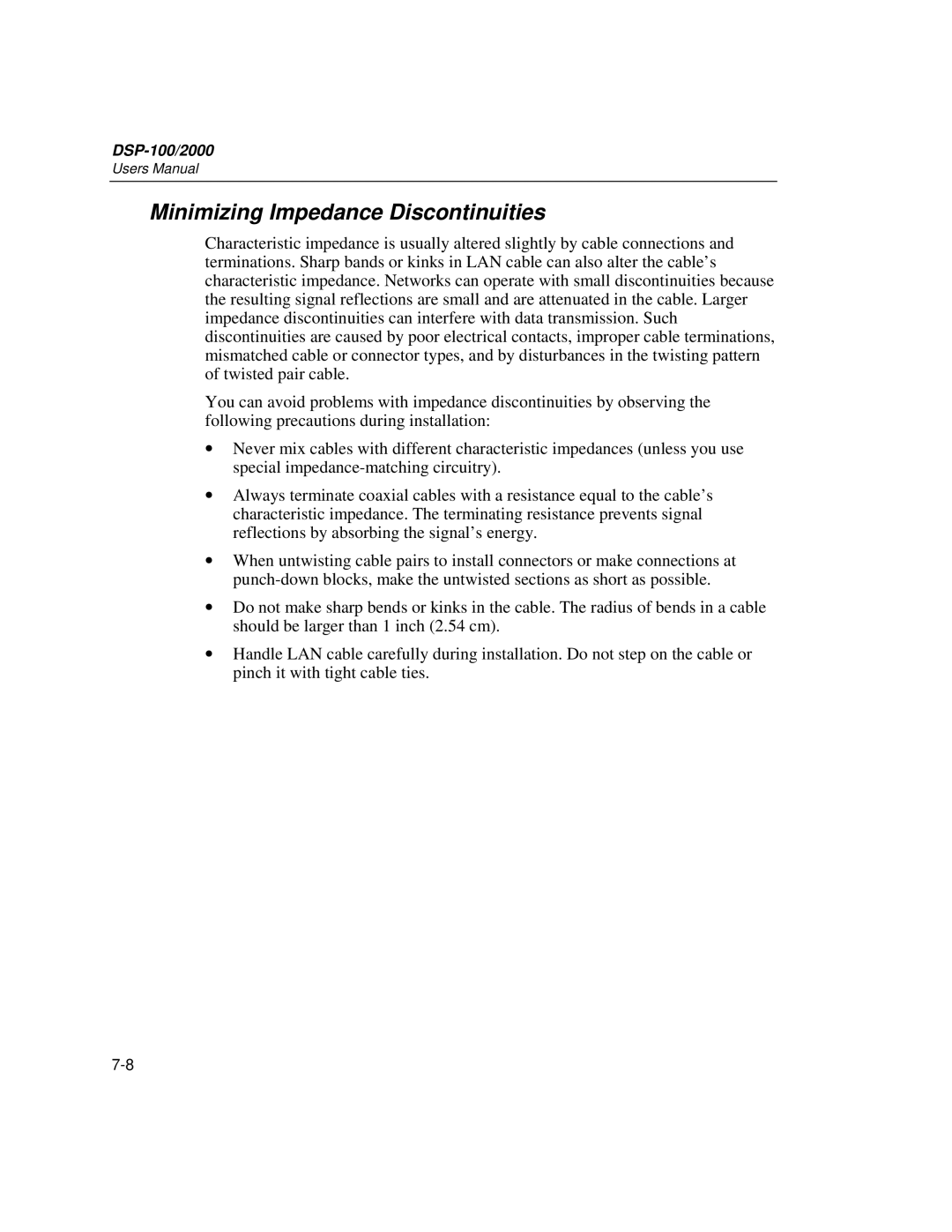DSP-100/2000
Users Manual
Minimizing Impedance Discontinuities
Characteristic impedance is usually altered slightly by cable connections and terminations. Sharp bands or kinks in LAN cable can also alter the cable’s characteristic impedance. Networks can operate with small discontinuities because the resulting signal reflections are small and are attenuated in the cable. Larger impedance discontinuities can interfere with data transmission. Such discontinuities are caused by poor electrical contacts, improper cable terminations, mismatched cable or connector types, and by disturbances in the twisting pattern of twisted pair cable.
You can avoid problems with impedance discontinuities by observing the following precautions during installation:
∙Never mix cables with different characteristic impedances (unless you use special
∙Always terminate coaxial cables with a resistance equal to the cable’s characteristic impedance. The terminating resistance prevents signal reflections by absorbing the signal’s energy.
∙When untwisting cable pairs to install connectors or make connections at
∙Do not make sharp bends or kinks in the cable. The radius of bends in a cable should be larger than 1 inch (2.54 cm).
∙Handle LAN cable carefully during installation. Do not step on the cable or pinch it with tight cable ties.
